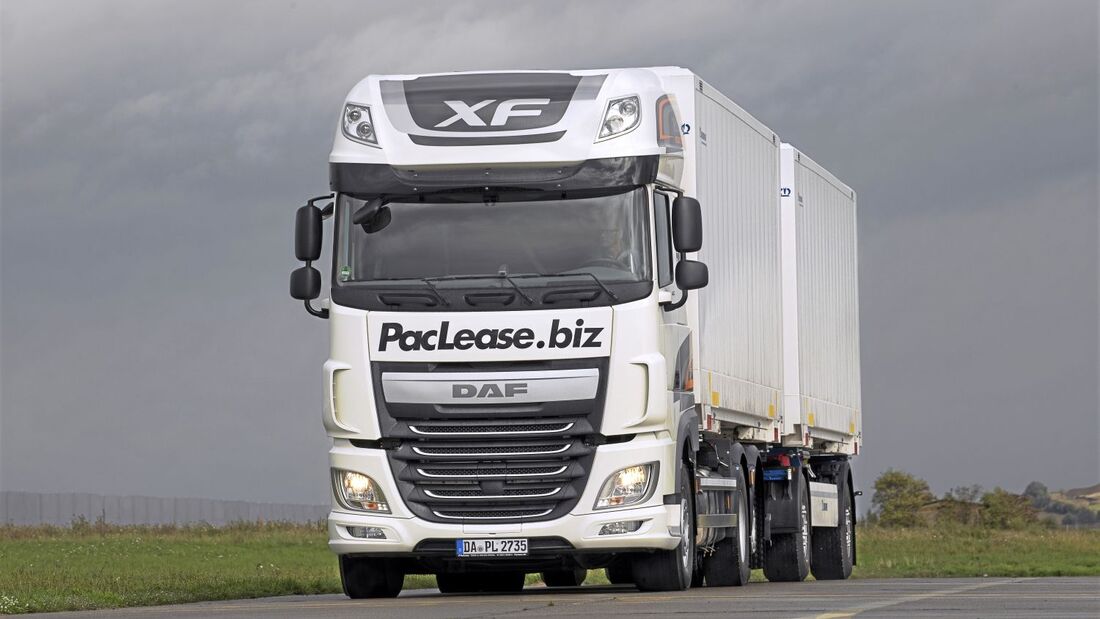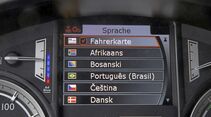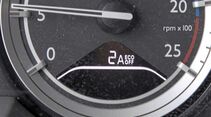Swap bodies are both a blessing and a curse. They create mixed feelings everywhere. They are great for freight transfers with other vehicles, waiting patiently on the ramp or elsewhere. But they do not always get the most careful treatment. The technology is certainly more complicated than for the tractor-trailer vehicle, and it requires drivers who know their business. Even if it is not always easy for them, and they often have hassle with things like twisted or stiff support legs.
DAF offers BDF chassis from the factory
But, at the same time, they do not get a bad reward for their efforts once the last twistlock is tightened and the trip can begin. After all, the driving comfort in very long wheelbase three-axle vehicles customary for such transport runs is totally different to and better than in common tractor-trailer vehicles with their associated constant problems. The swap-body chassis creates mixed feelings not just among truck manufacturers. Though widespread in Germany, this drawbar-trailer-dependent configuration is still only an exotic rarity in Europe as a whole. But attractive enough to now tempt DAF to offer BDF chassis from the factory.
However, they are limited to bodies of up to a maximum of 7.45 m in length and the common parking height of 1.32 m. The XF 460 FAR – which is the full name of the BDF contender driven here – fits the bill exactly. But it does not just come straight off the rack. It may not be visible at first sight, but the optional front air suspension from DAF is quickly noticeable when driving.
The AS-Tronic first moves very smoothly through the gears in ever-decreasing increments. However, the smooth ride is due to more than just the full air suspension system and excellently functioning automated clutch control. Another contributing factor is that the acceleration is simply not what it could be, or what one might expect from 460 hp and 2,300 Nm.
Eco is designed to save fuel
"Eco" is DAF's name for what is behind these new characteristics on trucks from Holland, above all designed to achieve one thing: saving fuel. One way of doing this is through a certain torque reduction which puts a stop to temperamental bursts of speed and reduces the torque in gears one to eleven by up to 10%. Flooring the gas pedal will not help either, as DAF has abolished the kickdown function. Manual intervention is also a no-no from 30 km/h on.
Anyone who really wants to make headway has to do as follows: Pressing the small button on the head of the right steering wheel switch turns off the Eco function and releases the full torque, as well as manual intervention. But only for 60 seconds, provided the full-torque command to the engine room (via the floored pedal) no longer exists. In other words: Traveling uphill, the Eco DAF goes at full throttle for hours when the pedal is floored, but quickly switches to reduced mode at partial load.
The limit is 89 km/h
It is a similar story with passing from 85 km/h on or generally cruising speeds above this value: At the touch of a button, the Eco DAF releases the otherwise strictly limited 85-km/h speed limit, switches to "ECO off" and thus enables acceleration via the gas pedal up to the 89-km/h speed limit. That all first takes getting used to and does not necessarily obey common logic. A good question is: Why order 2,300 Nm and 460 hp to then get less later?
But DAF has a different view. Since these measures undoubtedly reduce consumption without significantly affecting driving performance, the buyer will buy into it: That basically sums up DAF's philosophy, which virtually turns the top-torque method usually employed on its head. Instead of additional torque in top gear, DAF provides reduced torque from gears one to eleven, as well as the somewhat complicated option of also canceling everything from case to case.
If you find that all too weird, you can exercise your discretion and have the software adapted differently by the manufacturer to suit your needs – restoring more or less its original state without any such Eco functionalities.
The 2015-generation DAF vehicles compliant to Euro 6 also operate at a measured pace in many other areas: From the beginning, things such as LED headlights and an intelligent air compressor – with a preference for operating only downhill – have stood for low energy consumption in the case of DAF Euro-6-compliant vehicles. Recently added finesses include expanded use of so-called multifuel injection, with more nuanced operation contributing to very smooth running of the vehicle.
In 90% of cases operating at lower rpm
A new camshaft profile enables even more performance to be elicited from the engine brake. This also serves the purpose of quieter operation: The engine brake now hits its peak form at 1,500 rpm instead of previously at around 1,900 rpm, with maximum braking torque climbing from 1,350 Nm to almost 1,750 Nm. Translated into braking power: 370 braking horsepower is now already available at 1,500 rpm instead of previously at 1,900 rpm.
The water pump operates more or less invisibly, featuring two-stage control and operating at a slightly slower pace. "In 90% of cases," DAF says, it can operate at the lower rpm. The soot regeneration speed is also restricted.
Thanks to an optimized heating strategy, controlled regeneration is designed to take place only every 100 hours instead of every 50 hours previously. The new, anticipatory cruise control has been carefully implemented in 2015 DAF vehicles. The utmost care has been taken to help it prevent a drop of fuel from being wasted. It always keeps the gearbox in the highest, fuel-saving direct gear as long as possible and is generally stingy with the revs. The DAF Predictive Cruise Control (PCC) will sometimes prefer a slower pace over the crest of a hill than set.
Four additional 36-l air tanks
That usually happens if there is the prospect of free acceleration by means of gravity. DAF’s now widely practiced principle of deceleration does not apply to the oil pump or alternator. The Dutch manufacturer has given both components more power. What it is all about is the same, i.e. to save fuel. When it comes to trying to save time, at least DAF has certainly not been stingy with its air management for raising and lowering swap bodies. There is a whopping 12 bar of pressure in the relevant lines. Four additional 36-l air tanks ensure that the system does not run out of steam so quickly.
Raising the body is child’s play
With the air spring front axle, which now operates without the previous leaf spring support and is based on the Stabilink suspension similarly to the rear-axle suspension, raising the body is child’s play. At the front, the full-air-suspension DAF BDF is able to achieve an adjustment distance of exactly 280 mm using two air bellows resulting from a 190-mm lifting and 90-mm lowering distance. At the rear, it is 285 mm using four air bellows.
It is advisable to activate the rpm increase when reloading swap bodies. The air compressor will then not only operate with enthusiasm, but the automatic engine shutdown function will also hold back. Otherwise, it will not fail to take action after five minutes and will turn off the engine, which can be a bit annoying for the driver – especially during the process of reloading bodies.










